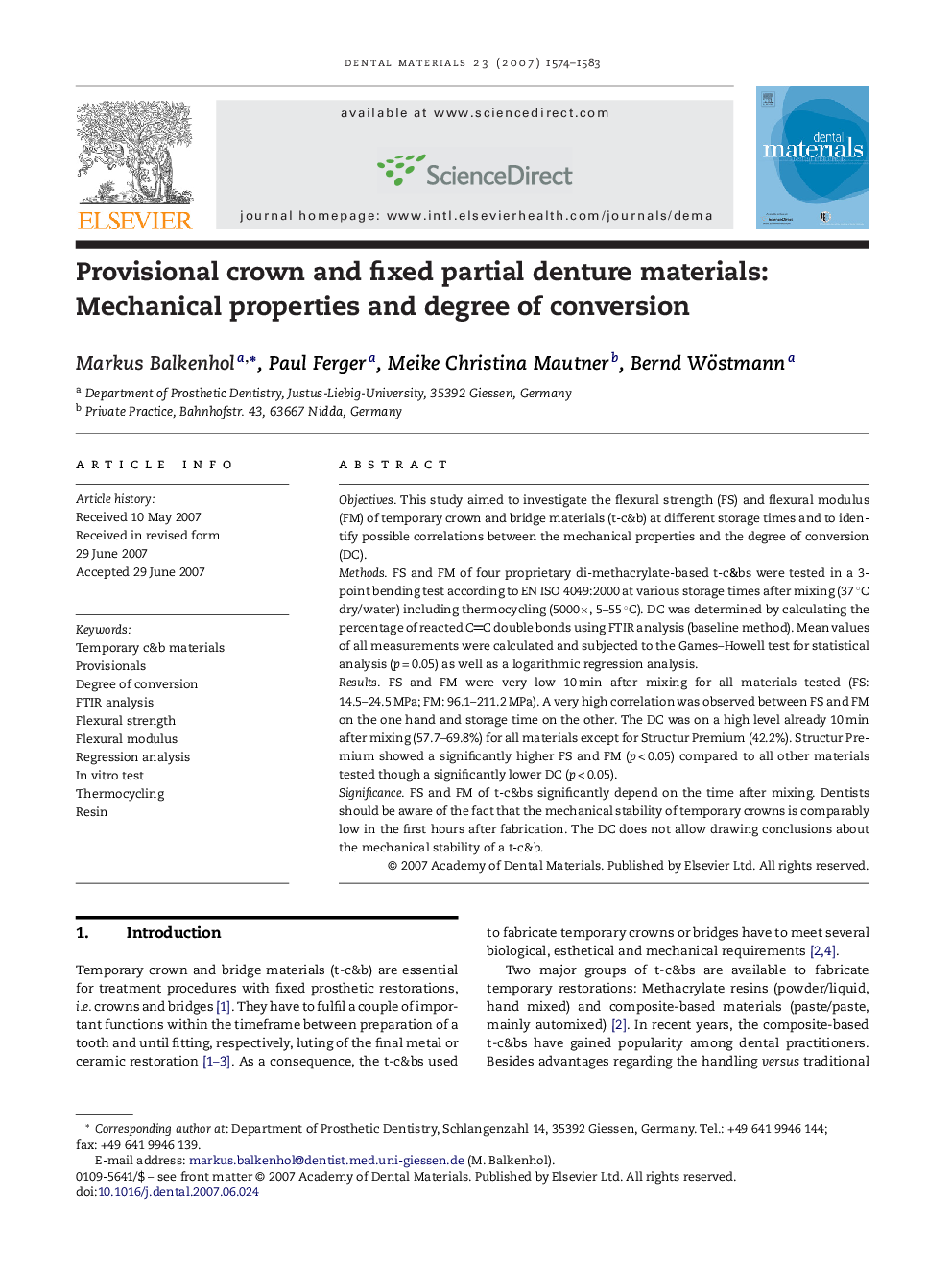| Article ID | Journal | Published Year | Pages | File Type |
|---|---|---|---|---|
| 1423104 | Dental Materials | 2007 | 10 Pages |
ObjectivesThis study aimed to investigate the flexural strength (FS) and flexural modulus (FM) of temporary crown and bridge materials (t-c&b) at different storage times and to identify possible correlations between the mechanical properties and the degree of conversion (DC).MethodsFS and FM of four proprietary di-methacrylate-based t-c&bs were tested in a 3-point bending test according to EN ISO 4049:2000 at various storage times after mixing (37 °C dry/water) including thermocycling (5000×, 5–55 °C). DC was determined by calculating the percentage of reacted CC double bonds using FTIR analysis (baseline method). Mean values of all measurements were calculated and subjected to the Games–Howell test for statistical analysis (p = 0.05) as well as a logarithmic regression analysis.ResultsFS and FM were very low 10 min after mixing for all materials tested (FS: 14.5–24.5 MPa; FM: 96.1–211.2 MPa). A very high correlation was observed between FS and FM on the one hand and storage time on the other. The DC was on a high level already 10 min after mixing (57.7–69.8%) for all materials except for Structur Premium (42.2%). Structur Premium showed a significantly higher FS and FM (p < 0.05) compared to all other materials tested though a significantly lower DC (p < 0.05).SignificanceFS and FM of t-c&bs significantly depend on the time after mixing. Dentists should be aware of the fact that the mechanical stability of temporary crowns is comparably low in the first hours after fabrication. The DC does not allow drawing conclusions about the mechanical stability of a t-c&b.
